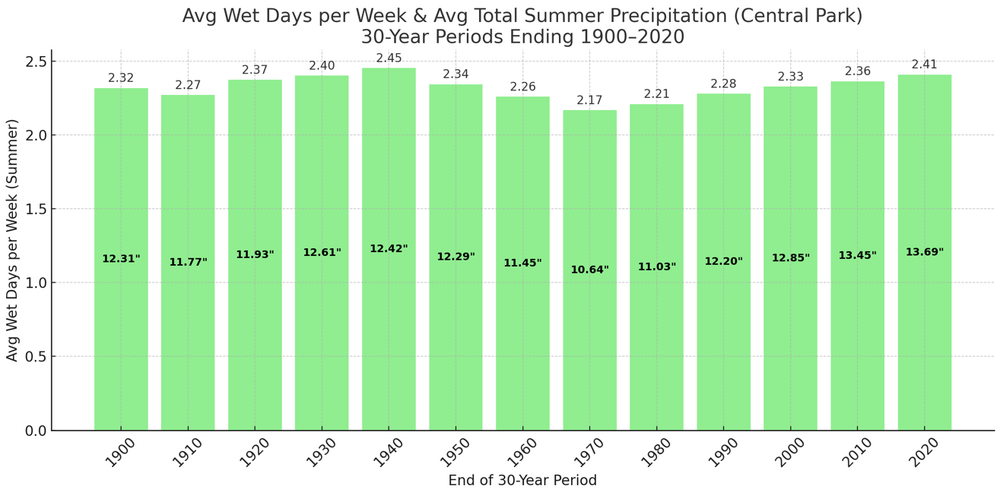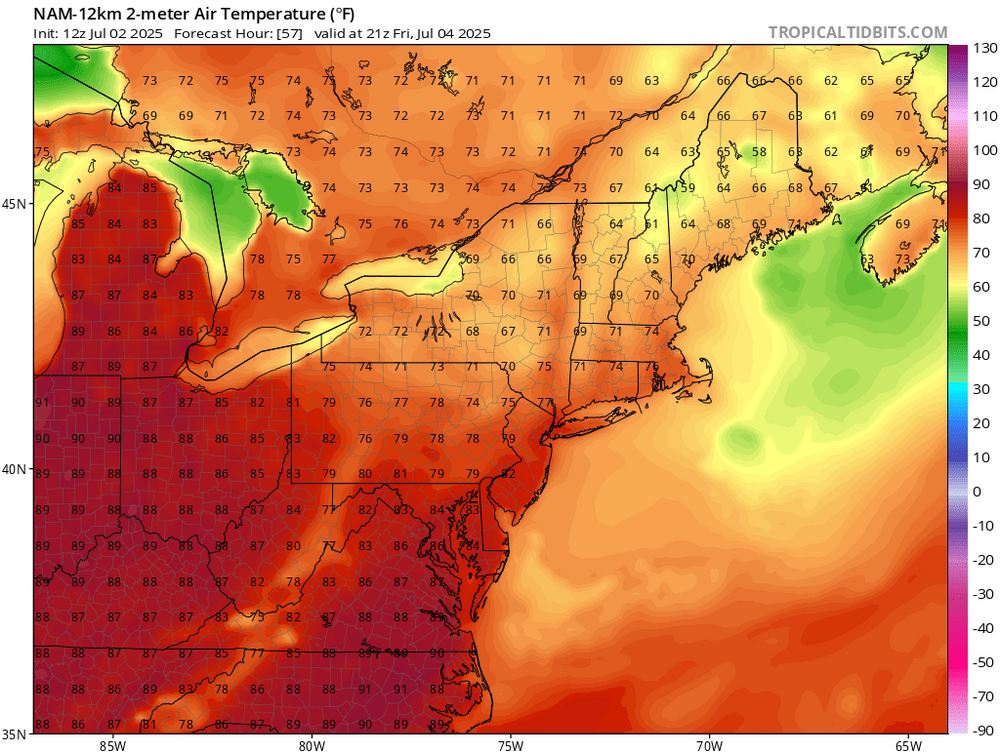All Activity
- Past hour
-
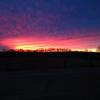
July 2025 Obs/Disco ... possible historic month for heat
ineedsnow replied to Typhoon Tip's topic in New England
I hope it messes with the heat coming up -
nebby joined the community
-
July 2025 Obs/Disco ... possible historic month for heat
Typhoon Tip replied to Typhoon Tip's topic in New England
that chart does not signify "no sign" - to say so doesn't do this source any help in confidence they know how to interpret -
July 2025 Obs/Disco ... possible historic month for heat
NoCORH4L replied to Typhoon Tip's topic in New England
My folks still don't have AC. Granted they are at 1,200', but still, some of the few around that don't have it I bet, do they even build new house without central AC? -

July 2025 Discussion-OBS - seasonable summer variability
donsutherland1 replied to wdrag's topic in New York City Metro
Yes, all things being equal, a wetter climate can temper heatwave intensity and duration. -
July 2025 Obs/Disco ... possible historic month for heat
Typhoon Tip replied to Typhoon Tip's topic in New England
I actually completely agree with this source's "hot take" on the outlook. -

July 2025 Discussion-OBS - seasonable summer variability
donsutherland1 replied to wdrag's topic in New York City Metro
That's something the data can't really illustrate. But one would expect similar trends in the nearby locations as one is seeing at Central Park if synoptic developments were largely responsible. Instead, Central Park has been decoupling from the nearby locations when it comes to high temperatures. Indeed, absent the trees, Central Park would likely have had two 100° days so far, including a June record 102° high (pre-2000 regression equation). -

July 2025 Discussion-OBS - seasonable summer variability
LibertyBell replied to wdrag's topic in New York City Metro
Yes, it's completely out of range compared to the other reporting stations. But the wetter climate might be shortening the length of heatwaves and also limiting the frequency of 100 degree temperatures (compared to how frequent 7 day heatwaves and 100 degree temperatures were during the 1990s for example.) -

July 2025 Discussion-OBS - seasonable summer variability
LibertyBell replied to wdrag's topic in New York City Metro
But what about these fronts stalling near the coast, something we really did not see at least in the month of July in summers like 1991, 1993, 1999, 2002, etc (basically the summers with the longest heatwaves since 1953.) From what I remember of 1993 and 1999 and 2002 especially, the fronts always died out before they made it into our region (at least in July.) This enabled us to have extra long heatwaves without being interrupted with days of rain. -

July 2025 Discussion-OBS - seasonable summer variability
donsutherland1 replied to wdrag's topic in New York City Metro
Wetter summers but not more frequent rainfall. But the decoupling between Central Park, JFK, LaGuardia, and Newark, which are experiencing similar rainfall trends suggests its Central Park's local environment that is playing the larger role in somewhat reduced high temperatures. -

July 2025 Discussion-OBS - seasonable summer variability
donsutherland1 replied to wdrag's topic in New York City Metro
The average number of days with 0.01" or more rainfall per week during the summer hasn't really changed too much. The amount of rainfall has increased and was at its highest 30-year average for the 30-year period ending in 2020. If one goes beyond 2020, the most recent 30-year period (1995-2024) averaged 2.42 days per week with 0.01" or more rain during the summer and average total summer rainfall of 13.99". -

July 2025 Discussion-OBS - seasonable summer variability
LibertyBell replied to wdrag's topic in New York City Metro
-

July 2025 Discussion-OBS - seasonable summer variability
LibertyBell replied to wdrag's topic in New York City Metro
Yes, nothing like the extreme heat we had in 1966 or 1993 or 1999 around the same time frame. This is why I say our extreme heat has flatlined. -
The Split was real on Tuesday. However, MBY did fine the previous several days. After the hot temps July 4-8/9 the benign weather pattern is still forecast for a good chunk of July. Forecast looks seasonably hot but temps not much if any above normal. Greater anomalies should be north. CFS has the GL mild but it's an outlier. EC and GEFS weeklies have a hot Midwest, but that's OK. AN heights north leaves ours near normal, which will allow scattered pm t-storms. The latter two weekly products also line up with most teleconnections. Very end of July is still up in the air. The PNA pattern may get stale by then which would let in more heat, but not necessarily for long. We'll see.
- 154 replies
-
July 2025 Discussion-OBS - seasonable summer variability
SACRUS replied to wdrag's topic in New York City Metro
more familiar heat over the top from 2020's next week, but still heat getting here. The earlier 100 heat potential seems to be focused inland s-w with low - mid 90s in the usual non coatsal hotter spots - 7/6 - 7/9 -
Clearing line reaching DC and moving East. However, dew points are still rather high even at locations far to the West of DC.
-

July 2025 Discussion-OBS - seasonable summer variability
LibertyBell replied to wdrag's topic in New York City Metro
This front needs to go away.... on a positive note, my forecast is for mostly sunny and clear blue skies from Thursday through Monday. -

July 2025 Discussion-OBS - seasonable summer variability
LibertyBell replied to wdrag's topic in New York City Metro
One other thing I have seen and maybe you can comment on Chris, is much rainier summers since 2002 leading to overgrowth of foliage. We aren't supposed to be this green in the summer, we're not in a tropical rain forest (or at least aren't supposed to be.) Our climate was much drier in 1988, 1991, 1993, 1995, 1999, 2002. Our normal summer pattern is to have sunshine 6 out of every 7 days with a few hours of showers and thunderstorms one day every week. Now, we get stalled fronts and multiple days of rain (like yesterday and today). In our hotter summers, the Bermuda ridge is supposed to be strong enough to keep all fronts well to our west and north and very little rain in July. That's been my experience living here. What caused this to change that now fronts stall in our area-- as if we live in Florida? Our climate has become like the Gulf Coast, where they do get fronts but the fronts stall out and you get days of rain. It's okay to get 2 days of rain after a 100+ degree heatwave but we didn't have that over the weekend, we had a very modest heatwave and we still have to deal with a stalled front in July? Why? Growing up, this never happened here when we had a normal hot summer. And because of this fake artificial rainier climate we are in now, our heatwaves have become MUCH shorter, note how long the heatwaves were in 1993, 1999 and 2002, we just do not get that anymore. -

July 2025 Obs/Disco ... possible historic month for heat
CoastalWx replied to Typhoon Tip's topic in New England
He’s a clown -
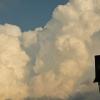
July 2025 Obs/Disco ... possible historic month for heat
kdxken replied to Typhoon Tip's topic in New England
I haven't gone into the woods yet but I'm sure they're there. -
July 2025 Obs/Disco ... possible historic month for heat
SJonesWX replied to Typhoon Tip's topic in New England
and as of last night the deer flies are out. Last year they were so bad that when riding the golf cart through my trails i held up one of those electronic bug zapper tennis rackets and they just kamikazi'd themselves trying to get me. zzzzzzzzzzzzzzzzzap! -
July 2025 Obs/Disco ... possible historic month for heat
Great Snow 1717 replied to Typhoon Tip's topic in New England
your post is going to upset the "villagers" -

July 2025 Obs/Disco ... possible historic month for heat
kdxken replied to Typhoon Tip's topic in New England
-
July 2025 Obs/Disco ... possible historic month for heat
Great Snow 1717 replied to Typhoon Tip's topic in New England
.36 here -
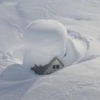
July 2025 Obs/Disco ... possible historic month for heat
powderfreak replied to Typhoon Tip's topic in New England
Ineedblankets getting his July 4th temperatures? Here in the valley up north the high is 71F currently. New 12z NAM might not make it out of the 60s north and mid-70s SNE valleys under full sun? Independence Day... Sunny, with a high near 71. Northwest wind 5 to 9 mph, with gusts as high as 20 mph. -

July 2025 Obs/Disco ... possible historic month for heat
kdxken replied to Typhoon Tip's topic in New England


